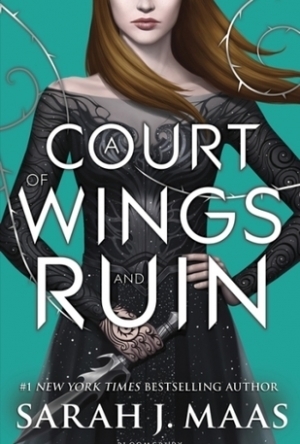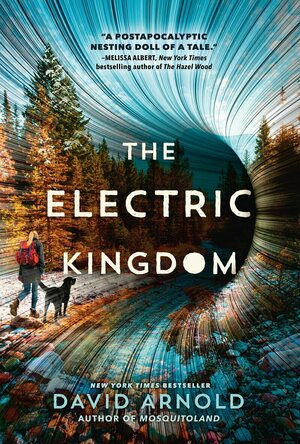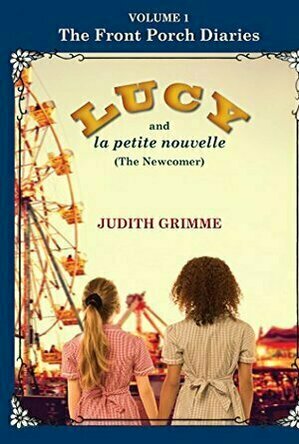
LUCY and la petite nouvelle: The Newcomer (The Front Porch Diaries #1)
Book
Nine-year-old Lucy Miller loved to dream about visiting other countries, but from her front porch...
Historical Children Middle Grade
Acanthea Grimscythe (300 KP) rated A Court of Wings and Ruin in Books
May 15, 2018
Like sex. Lots and lots of detailed sex. The few times it popped up in the Mist and Fury, it was alright. Wings and Ruin, on the other hand, really hones in on the sexual relationship between Feyre and Rhysand. A bit too much for my taste, anyway.
Sex aside, the plot moves along at a fairly quick pace and, for the most part, kept me hooked. (As in, I legit stayed up waaay too late one night reading.) I also love that there was a bit more focus on Feyre’s sisters this time around, rather than Feyre’s own self interests. It’s nice to see her grow as a… person, I guess you could say.
Overall, this isn’t my favorite book of the bunch, but I don’t find it (or its ending, which I feel is approached with the same logic I would have used) to be near as horrid as I was told to expect. I look forward to the next in the series, as ACOTAR is, undoubtedly, a guilty pleasure of mine.
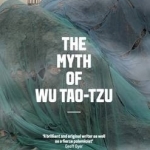
The Myth of Wu Tao-tzu
Book
'During the Tang dynasty, the Chinese artist Wu Tao-tzu was one day standing looking at a mural he...
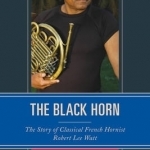
The Black Horn: The Story of Classical French Hornist Robert Lee Watt
Book
The Black Horn: The Story of Classical French Hornist Robert Lee Watt tells the story of the first...

The Boiling River
Book
Part of the TED series: The Boiling River This fantastical tale - which sent scores of Spanish...

The Speaker: Sea of Ink and Gold Book 2
Book
The sequel to the critically-acclaimed New York Times bestselling fantasy The Reader, "highly...
fantasy young
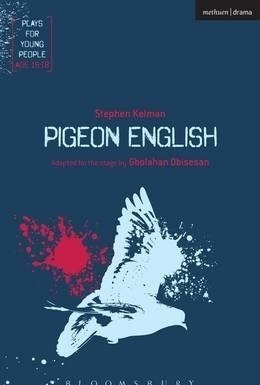
Pigeon English
Stephen Kelman and Gbolahan Obisesan
Book
There was a ruckus at lunch time. It was the best one so far. Nobody knew why they were fighting...
Death YA Loss Working class Detective
Ali A (82 KP) rated The Electric Kingdom in Books
Jan 11, 2021
Every character that David Arnold writes in this book is so full of love, warmth, and heartbreak. I fell in love with Kit and his outlook on live. It was beautiful. The relationship he had with his mother Dakota, and why he calls her “My Dakota” made me tear up.
I’m not sure I completely understand the whole dynamics of the world that is in this book, but I still very much enjoyed it! There are so many layers and plot twists and double backs, you don’t realize how intense it is until you’re half way through it. By then, Arnold has you hooked and you’ve got to find out what happens and how it’s all connected!
I haven’t read anything from Arnold before but I enjoyed this one and will seeking out others from him.
*Thank you Bookish First and Penguin Teen/Viking Books for Young Readers for an advanced copy of this book in exchange for an honest review
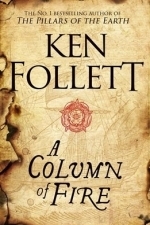
A Column of Fire
Book
The saga that has enthralled the millions of readers of The Pillars of the Earth and World Without...
Fiction
<i>I received this book for free through Goodreads First Reads. </i>
There is often a preconception that self-published books are not as good as those printed by world famous publishers. Yet, given a chance, there are a few that surprise you. Unfortunately, there are many issues with Laura Foster’s debut novel <i>Crimson</i>. The actual concept has promise of appealing to a range of readers due to falling into a variety of genres: fantasy, science fiction, young adult and paranormal/horror. Where the novel suffers is within the writing style and obvious lack of proof reading.
The storyline concentrates on a homeless young girl whose frightening nightmares have led her to believe she is in grave danger. Dawn Pearson, who the reader is led to believe is only twelve or thirteen years of age, is determined to get as far away from the creature in her dreams as possible. With the help of Mike, a friend she makes on the street, she narrowly escapes being captured by the red-eyed, irascible monster she has named Crimson.
While the pair flee, Dawn and Mike become aware of another terrifying beast, although neither understand why Dawn is being hunted. It soon manifests that Dawn harbours an ethereal power, suggesting that she is far from the human she believed herself to be. As the thrill of the chase heightens, readers are left with questions: who is Dawn? Who is the Crimson? Which characters can be trusted?
It is not clear what the target age group is, however the youthful ages of Dawn and Mike make it suitable for a young adult audience as well as adult readers in general. Dawn and Mike’s relationship, although sudden, becomes a key aspect of the story. For once a friendship between a male and female has no romantic connotations attached, thus not detracting from the surreal circumstances of the plot. Both Dawn and Mike show admiral traits of selflessness – something that ostracizes them from the remainder of ignoble characters.
Sadly, the dramatic climax spirals into confusion. Ever changing plot directions make it unclear who the heroes are, and perplexing scene descriptions make it difficult to picture what the author had in mind. This was a more prominent issue toward the conclusion of the book, resulting in an unsatisfying ending.
One of the major problems with the writing is the constant switching of points of view. Although written in third person, a narrative still speaks from one character’s perspective. This can change from character to character, but usually separated into different chapters. In <i>Crimson</i>, however, Foster alters the viewpoint from paragraph to paragraph. This occasionally makes the text difficult to follow.
As with any lengthy body of text, printing errors can occur – nobody is perfect. On the other hand, the amount of typos in <i>Crimson</i> makes it hard to believe that it had ever been proofread in the first place. Some mistakes are clearly typing errors that are (probably) not the author’s fault, however the repeated misuse of words such as seized/ceased and wondered/wandered are not easy to forgive.
Overall, the premise was there, the writing not so much. It is understood that Laura Foster is currently working on a sequel to <i>Crimson</i>, but its success rests on how well this first book is received. If people can tolerate the errors pinpointed above, then the author has nothing to worry about, yet as it stands, it does not look promising.
